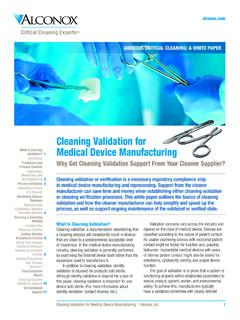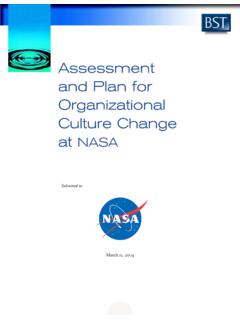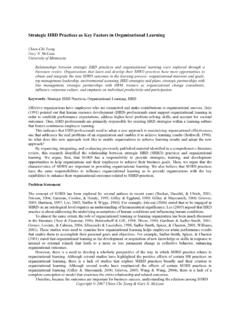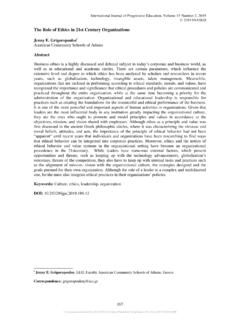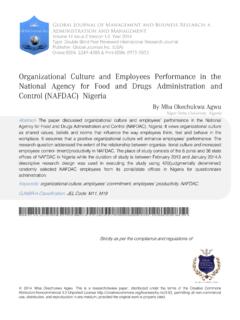Transcription of BRC Issue 8: Creating a Food Safety Culture
1 White PaperBRC Issue 8: Creating a Food Safety CultureCONTENTS1 Evolving Food Safety2 About the BRC Changes3 Get Started Building Your Food Safety Culture4 Assess/Measure, Plan and Reevaluate5 Conclusion2 | WHITE PAPERBRC Issue 8: Creating a Food Safety CultureAlthough food Safety is and has long been a priority for food producers and manufacturers, new regulatory environments, including new compulsory requirements from the updated BRC, focus on a company s overall approach its food Safety Culture . BRC Issue 8: Creating a Food Safety CultureHow can you ensure that you have a strong food Safety Culture ?
2 How do you begin to assess and measure your organizational food Safety Culture ? This guide will get you up-to-speed on the BRC Global Standard updates, help you get started building a food Safety Culture and evaluate your progress in reaching your goal. WHITE PAPER | 3 BRC Issue 8: Creating a Food Safety Culture1. Evolving Food Safety Food Safety has long been a priority for food and beverage companies. That said, recent regulatory and auditing environments are leading to a deeper dive into approaches and practices that enhance the quality of foods.
3 Government oversight and inspection is only part of the picture: the focus now is turning toward the manufacturer s cultural footing. This mindset centers around the notion that a strong food Safety Culture is the foundation that gives strength to successful Safety programs and implementations. Although many manufacturers have already set the tone with changes to the BRC Issue 8 Mandates, a food Safety Culture is no longer voluntary: it s now a compulsory requirement. Yet the concept can be difficult because Culture is inherently a reflection of attitudes and behaviors.
4 Moving forward with Culture as a compulsory requirement begins with defining and determining that Culture , which can be About the BRC Changes The BRC Global Standard provides a framework for food manufacturers to assist them in the production of safe food. In 1998, it was developed in response to the needs of UK members of the British Retail Consortium (BRC) to avoid the confusion and duplication of data which previously existed with various individual retailers schemes. Today the BRC Standards are used BRC Standard was the first standard recognized by the Global Food Safety Initiative (GFSI), an organization founded in 2000 to harmonize food Safety standards.
5 The GFSI benchmarks existing food standards against guidelines established by retailers, food manufacturers and food Safety experts to increase the transparency and efficiency of supply chains, minimize costs by reducing audit duplication and provide assurance of safe food for consumers. The BRC and its subsequent updates are the result in part of such industry-wide collaboration. Regular updates to the BRC Global Standards continue to reduce the burden of duplicate audits of certified sites. Changes to the standard reflect the latest thinking in food Safety .
6 Issue 8 is a response to continued alignment with GFSI benchmarks and potential implications of the US Food Safety Modernization Act (FSMA). One pronounced change in Issue 8 is the encouragement to develop a product Safety Getting Started - Building Your Food Safety Culture Although manufacturers might think their current food Safety Culture meets the mark, today s auditable and regulatory environment holds them more accountable than ever. It s important to look at what s new and relevant in the BRC Standard because the regulation sets new expectations for management Commitment of Senior Management is KeyAccording to the new standard in Issue 8, food Safety or quality managers can no longer hold the lead when it comes to leading and formulating a food Safety Culture .
7 Senior management are called to the forefront to engage because, the Standard observes, the product Safety Culture which prevails at the site is fundamental in the ongoing management of product Safety . A new clause requires the site to introduce and implement a plan for the development and continuing improvement of a product Safety Culture . Clause The site s senior management shall define and maintain a clear plan for the development and continuing improvement of a food Safety and quality Culture .
8 This shall include: Defined activities involving all sections of the site that have an impact on product Safety An action plan indicating how the activities will be undertaken and measured, and the intended timescales Review of the effectiveness of completed Building a food Safety Culture with the lead from senior management. 4 | WHITE PAPERBRC Issue 8: Creating a Food Safety Cultureactivities The regulation expands on the concept by requiring senior management to define and maintain a clear plan for the development and continuing improvement of a food Safety and quality Culture .
9 Clear objectives must be defined to maintain and improve the Safety , legality and quality of products. Objectives include: Clause Targets or clear measures of success Clear communication to relevant staff Monitoring and results reported at least quarterly to site senior management Another change is reflected in the review process, which is the addition of two new bullet points. The first states that management should learn the reasons why objectives are not being met and use them as the basis for setting future objectives.
10 The second bullet point clarifies that HACCP, food defense and food fraud should be included in the scope of the review meetings. Clause Management review meetings attended by the site s senior management shall be undertaken at appropriate planned intervals, annually at a minimum, to review the site performance against the Standard and objectives set in clause The review process shall include the evaluation of: Previous management review action plans and timeframes The results of internal, second-party and/or third- party audits Any objectives that have not been met, to understand the underlying reasons.

